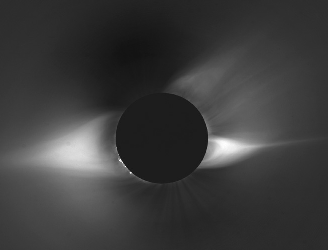FAQ - Ulysses
Frequently Asked Questions
[ Why the poles? | Will Ulysses improve our daily lives? ]
Why Ulysses?
Why is a mission to explore the poles of the Sun named after the mythical hero Ulysses? In the 26th Canto of the "inferno", Dante describes the last voyage of the Greek hero Ulysses (Odysseus) beyond Gibraltar, a region at that time completely unknown and unexplored. Dante called it a "mondo senza gente", an uninhabited world behind the Sun where there are no planets, no possibility of life, no familiar features. According to the legend, Ulysses' crew mutinied out of fear, and so he exhorted them to courage:
"Brothers, said I, that have come valiantly
Through hundred thousand jeopardies undergone
To reach the West, you will not now deny
To this last little vigil left to run
Of feeling life, the new experience
Of the uninhabited world behind the Sun.
Think of your breed; for brutish ignorance
Your mettle was not made; you were made men,
To follow after knowledge and excellence."
This medieval epic is highly representative of the tremendous drive to explore unknown regions and expand their knowledge in all the fields of science that motivated Europeans in the Middle Ages and then the Renaissance. That spirit is still alive today. The space mission "Ulysses" - first known as the "Out-of-Ecliptic Mission" (OOE), and later the "International Solar Polar Mission" (ISPM) - was given its definitive name in 1984, following a proposal by Prof. Bruno Bertotti of the University of Pavia, Italy. |
 |
Why the Poles?
A new perspective
An often-asked question is: "Why send a spaceprobe over the Sun's poles?" The simple answer is: "To observe the Sun from a new perspective". In the case of Ulysses, which does not carry imaging instruments, the observations focus on the Sun's environment rather that its surface. Of particular interest are the solar wind, the heliospheric magnetic field, and cosmic rays.
Looking at a photograph of a solar eclipse, it is easy to see that the solar corona (which is where the solar wind is born) is not the same at all latitudes. This is especially true at solar minimum when the Sun's activity is lowest. The corona over the poles is much less bright, telling us that the polar regions are somehow special.

An image of the solar eclipse of November 1994
(Courtesy of NASA).
The axis about which the Sun revolves is nearly perpendicular (at right angles) to the plane in which the planets move around the Sun (the ecliptic). This means that polar regions cannot be "seen" from Earth. Similarly, the solar wind from the poles never blows over the Earth. If we want to investigate this wind, we have to fly above the poles.
Ulysses is not only studying the Sun's polar regions. In fact, the key to the success of the mission is that it has provided scientists with a "map" of the Sun's environment, the heliosphere, at all latitudes, from the equator to the poles, in both hemispheres.
Reason enough, then, for scientists to want to satisfy their curiosity by sending a spaceprobe over the solar poles!
Will Ulysses improve our daily lives?
The answer to this question is not easily given in one or two sentences. In our daily lives, we rely more and more on services provided by satellites in orbit around the Earth: telephone connections, weather forecasts, TV broadcasts, for example. These satellites can be damaged by the effects of solar storms, so it is important that we understand the way in which such storms occur and, if possible, learn to predict them. On its own, Ulysses will not give us "space weather forecasting". It will, however, provide some of the information that one day may make accurate space weather forecasts possible.
Principally, however, Ulysses is a mission of exploration. It will help us to understand the Sun, the only star we can study at close quarters. After all, isn't it Man's curiosity about nature that really sets us apart from the animals?
